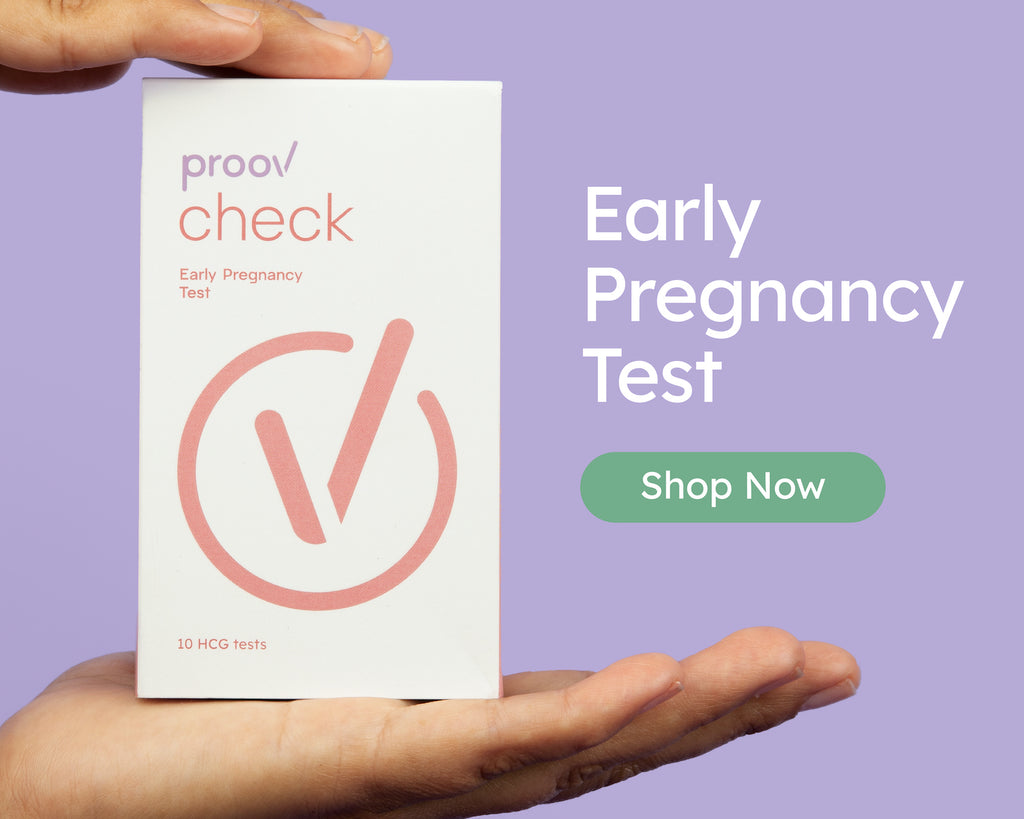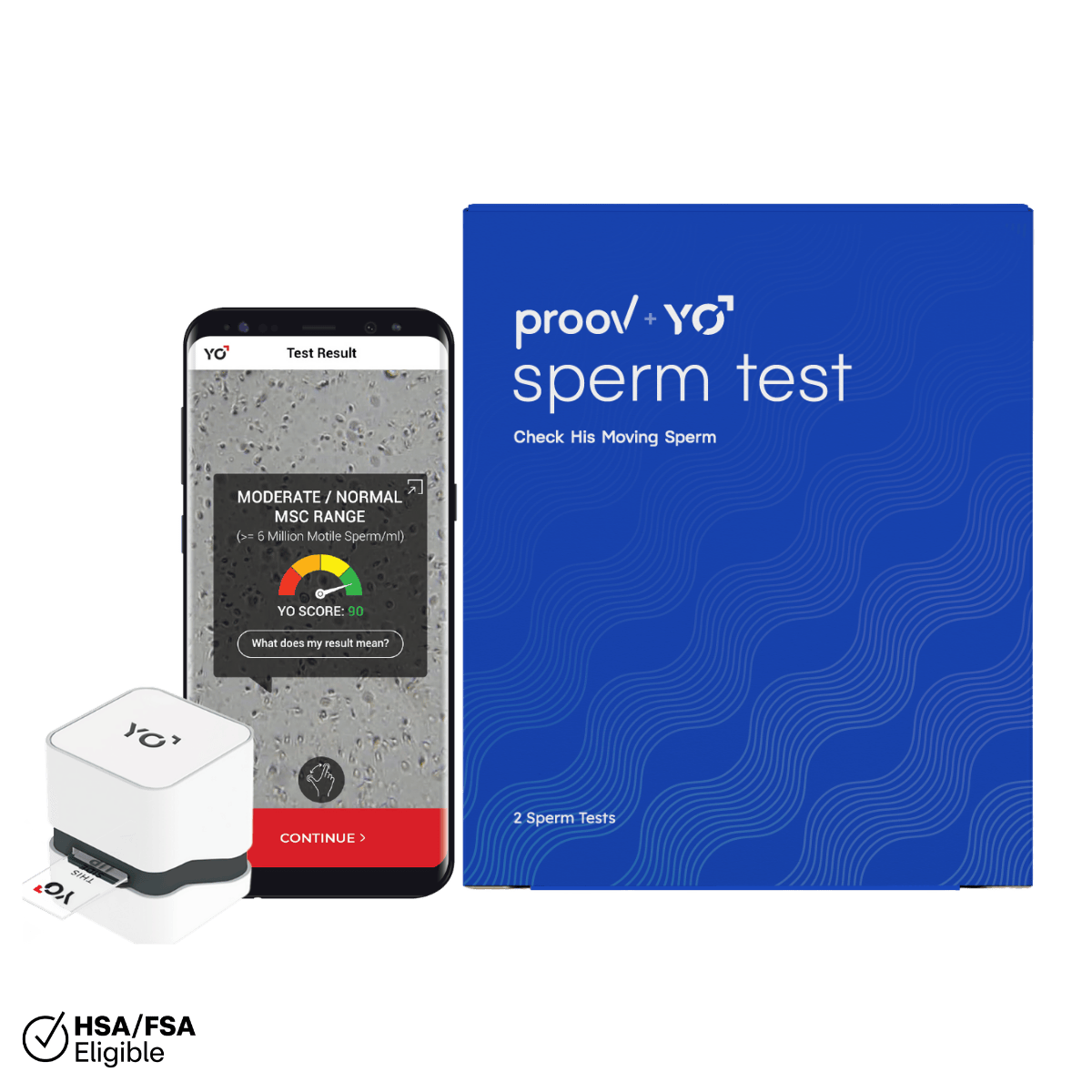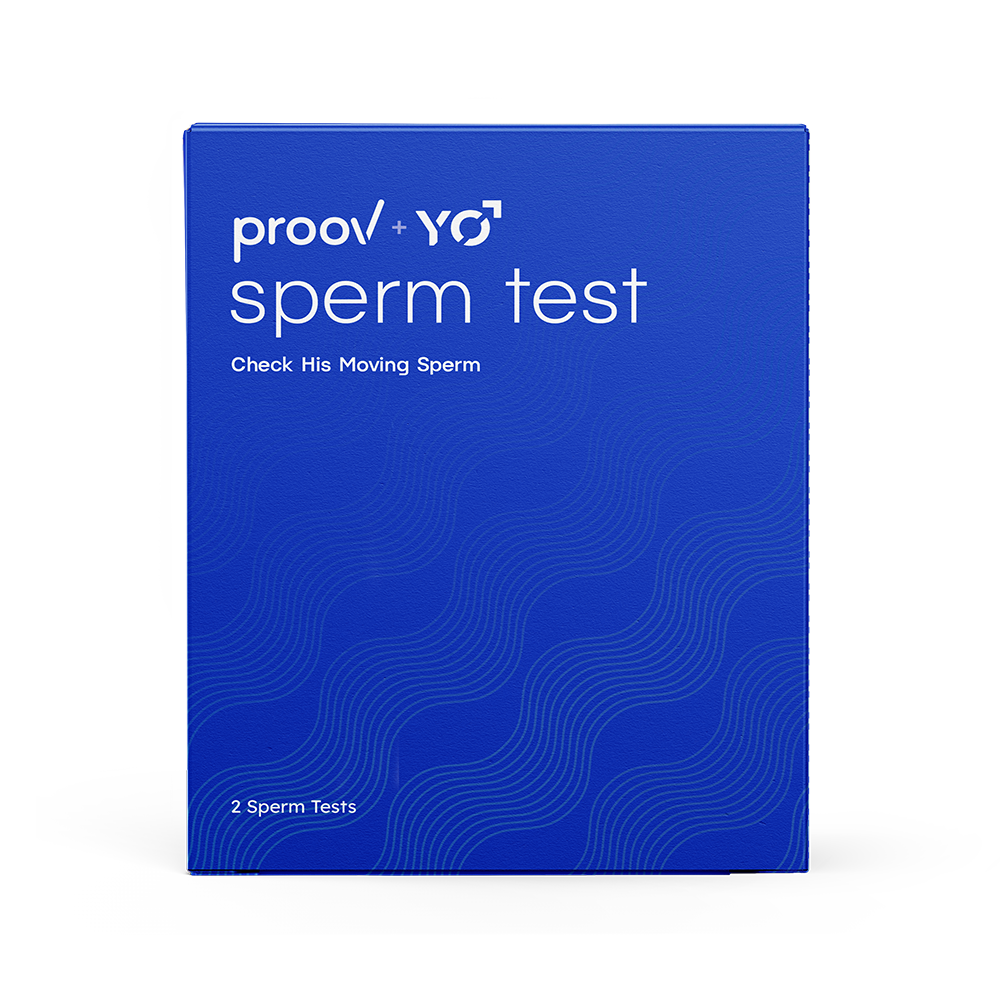Written by: Dr. Amy Beckley, PhD, Founder and Inventor of the Proov test — the first and only FDA-cleared test to confirm successful ovulation at home.
Written on 4/14/21
Updated on 6/29/22
Ovulation tests, also known as LH tests, are helpful tools when you’re trying to conceive, as they can give you insight into your fertile window — the days during your cycle when you’re most likely to get pregnant.
You may have heard that ovulation tests can also be used to detect early pregnancy. Is this true? The short answer is: we don’t recommend it. The long answer is a bit more complicated — and pretty fascinating!
In this article we’ll cover:
- How ovulation tests and pregnancy tests are similar and different
- Why using the right test at the right time is essential for getting accurate information
- The correct time in your cycle to use each type of test
Read on to learn more!
Can an ovulation test detect early pregnancy?
Both ovulation tests and pregnancy tests involve checking urine for the presence of certain reproductive hormones. So their technology is quite similar — but the hormones they test for are NOT the same. Ovulation tests measure luteinizing hormone (LH) to predict ovulation. Pregnancy tests, on the other hand, measure human chorionic gonadotropin (hCG) to confirm pregnancy.
So why is it rumored that ovulation tests can do the job of detecting early pregnancy? It’s not exactly a myth — it’s a misunderstanding. And it’s all because of chemistry.
Bear with us for a quick science lesson: Both LH and hCG are proteins that are built with a sugar attached to them. Their functions are completely different, yet their structures are very similar.
The structures of these two proteins are so similar, in fact, that some ovulation tests aren’t sensitive enough to tell the difference between LH and hCG in urine. That means if a woman is pregnant and takes an ovulation test toward the end of her luteal phase — the time in her cycle when pregnancy hormone hCG rises — she could get a positive result. That’s the test mistaking hCG for the similarly-structured LH protein it was designed to detect.
So in short, yes, you might detect early pregnancy by taking an LH ovulation test late in your cycle, far from the time it is meant to be used. Or, you might not. At-home hormone tests are painstakingly developed and regulated to do their intended job really, really well. Using any testing product for a purpose other than its intended use is a risky plan with no guarantee the results will be accurate or reliable. We highly recommend picking the right tool for the job — like Proov Predict tests to predict ovulation, and Proov Check to check for early pregnancy.
When should I use an ovulation test?
Ovulation tests (also called LH tests) detect changes in luteinizing hormone (LH) levels to predict when ovulation is going to occur. LH surges 12-36 hours before ovulation, giving you a helpful heads-up that it’s time to get busy if you’re trying for a baby.
In broad strokes, you can think of ovulation as the big event in the first half of your cycle, usually occurring within the week or so after your period ends. But to get the benefit of LH testing, you need to be much more precise. Ovulation tests come with detailed instructions for testing on specific days, and it’s important to follow these carefully.
If you’re using Proov Predict, we recommend beginning to test LH levels about 18 days before your next expected period.
If your cycles are irregular or if it is your first time testing, you may start using your LH tests a few days after the last day of your period. If you’re not using Proov Predict, always refer to the instructions for your specific ovulation test brand, as protocols can vary. This test is not used to measure lh levels after ovulation if pregnant, but rather to help predict ovulation.
Testing at the wrong time in your cycle won’t yield helpful information, and is really just a waste of money. Some ovulation tests, like Proov Predict, work together with an app to make tracking your testing schedule (and results!) super easy.
As far as the correct time of day to test for ovulation, you may have heard that it’s best to use first morning urine. LH surges in blood very early in the day, and then needs another couple of hours to show up in urine. So some people find that testing with second morning urine, usually around noon after a few hours hold, can be more accurate than testing first thing. Proov Predict kits include plenty of LH tests so that you can test levels two times per day if you choose.
You may wonder, "does LH surge stay high if pregnant?" While ovulation tests are a great tool, keep in mind that they can only predict expected ovulation, and this is not a guarantee that your body is conception-ready. To confirm that ovulation did in fact occur successfully, we recommend Proov Confirm PdG tests. It’s easy to stock up on both tests together with the Predict & Confirm kit!

A positive ovulation test indicates the opening of your fertile window.
When should I use a pregnancy test?
Pregnancy tests detect the hormone hCG in urine. The body only makes hCG during pregnancy, and its presence in urine is a sign that a fertilized egg has implanted in the uterus.
Implantation can occur anytime between days 6 through 12 after ovulation, with studies showing that the most common implantation day is day 9 post-ovulation. Once implantation occurs, it can take about 24 hours for hCG to show up when you pee.
In practical terms, all of this means that it takes time for implantation to occur, and hCG to reach levels detectable in urine. So testing very soon after ovulation really doesn’t make much sense, and is likely to yield a negative result even if you still have a chance at pregnancy that cycle. So even though it’s tempting to test early (we get it!), we definitely recommend following the instructions on your pregnancy test to make sure you get accurate results.
The good news is that the high-quality, super- sensitive tests like Proov Check are able to detect hCG as early as 5 days before your expected period — a great way to shorten the wait!















